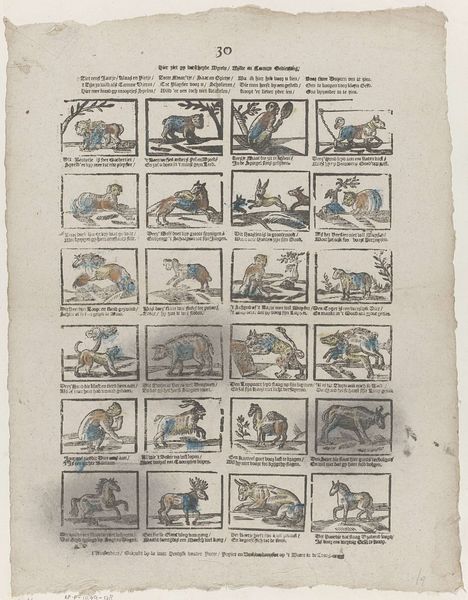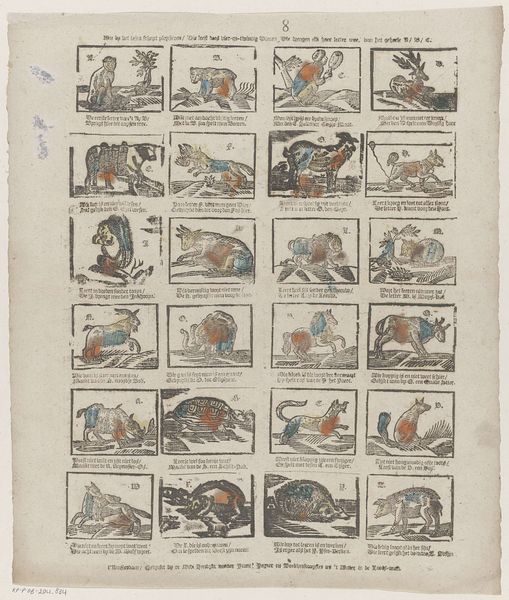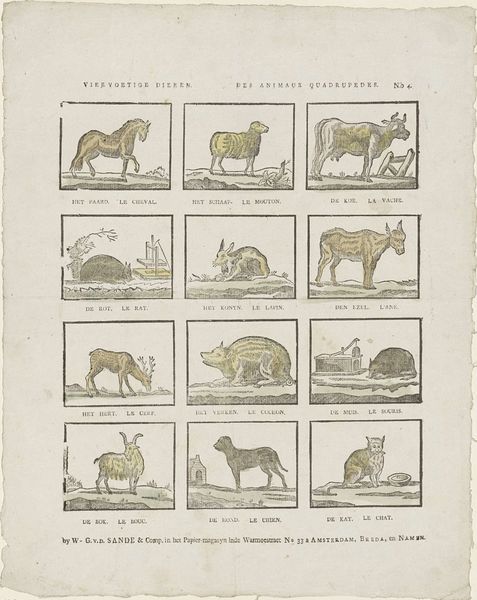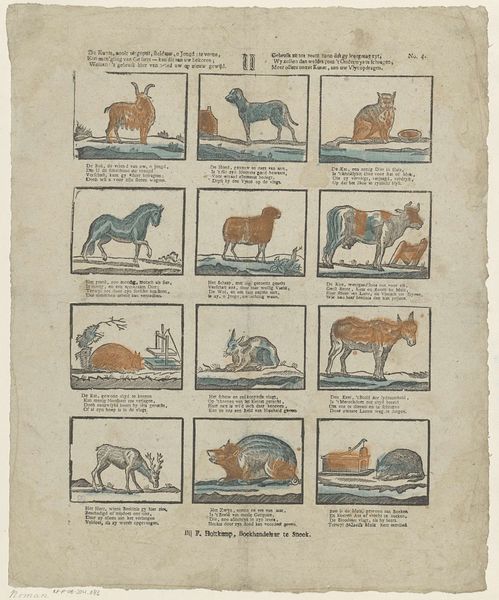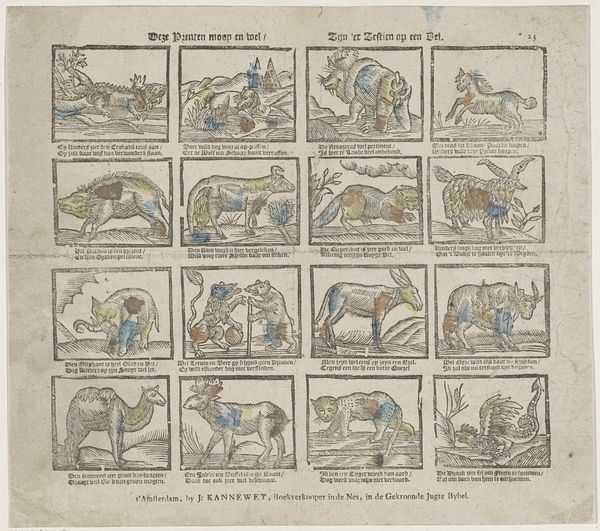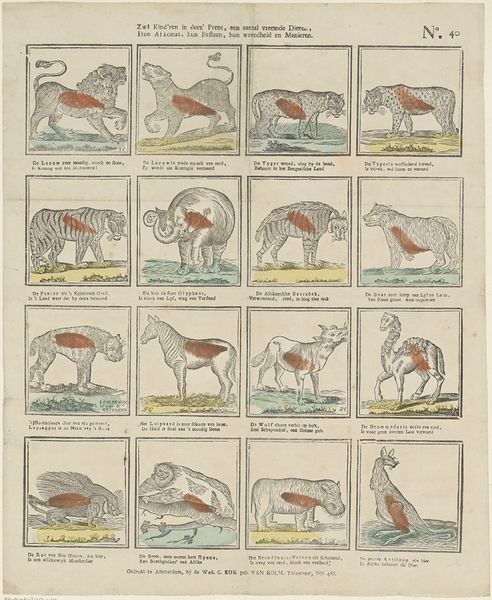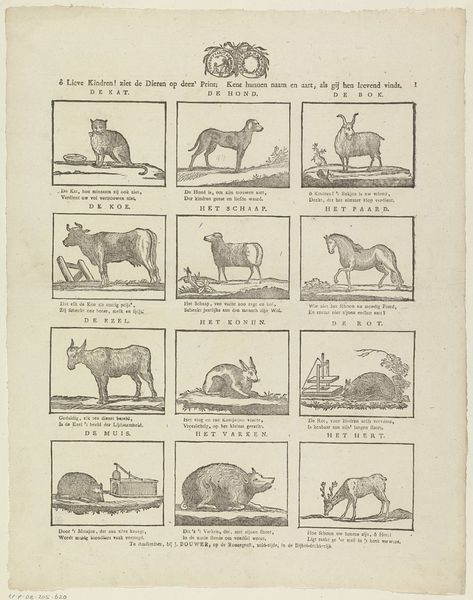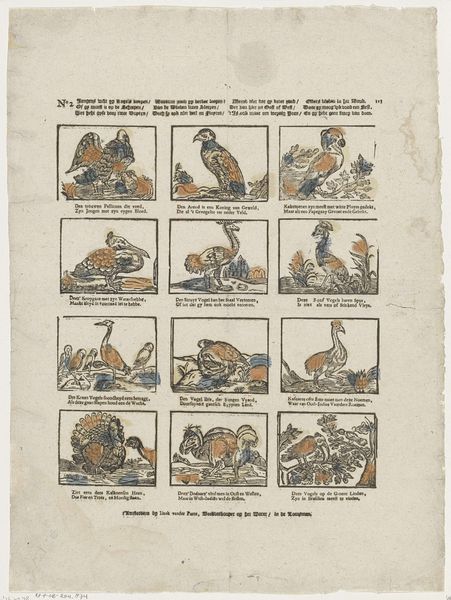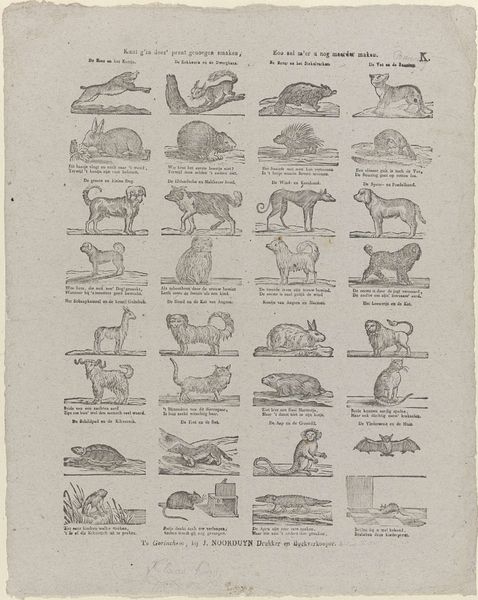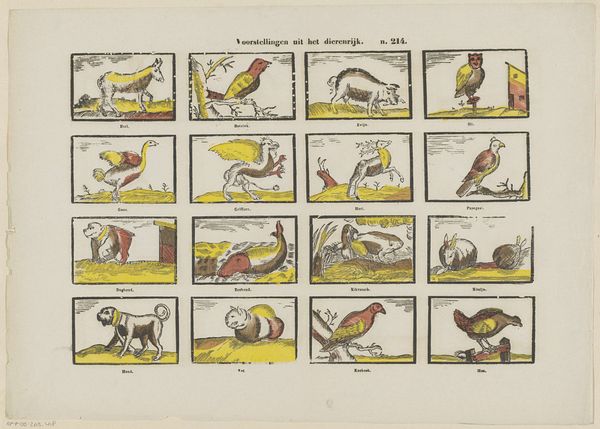
Deze prenten mooy en wel / Zijn 'er zestien op een vel 1787 - 1822
0:00
0:00
graphic-art, print, engraving
#
graphic-art
#
animal
# print
#
genre-painting
#
northern-renaissance
#
engraving
Dimensions: height 308 mm, width 361 mm
Copyright: Rijks Museum: Open Domain
Curator: This fascinating print, titled "Deze prenten mooy en wel / Zijn 'er zestien op een vel," was created sometime between 1787 and 1822. Jan Hendrik de Lange made it; the medium is engraving on graphic art print. Editor: Sixteen panels crammed together… it feels like a bestiary brought to life with a very rudimentary, almost folk-art style. The texture seems rough; are those hand-colored markings I see? Curator: Yes, the red accentuation catches the eye, doesn’t it? I am especially intrigued by its function as a piece produced and distributed for public consumption. These weren't luxury items; de Lange was a 'book printer and seller', actively circulating this imagery within his community. The labor involved in producing and selling this is more interesting than the image itself. Editor: Yet, that rudimentary style holds a strange power. Look at the composition of each panel – the lines are simple, yet effective in conveying the essence of each animal. See how it evokes a particular kind of didactic naturalism, each beast neatly defined within its little square of existence. And note the title, in the northern renaissance tradition. Curator: Precisely. And what were the social conditions in Deventer at this time, dictating the appeal of a certain rustic visual style? Consider the workshops, the distribution networks… were children the consumers, learning how to identify species? Editor: A strong likelihood given the image content. One almost feels that this animal encyclopedia stems from some deep symbolic language—that bear facing off against a lion—and these little frames work to elevate them, somehow. Curator: Or were these mass produced for the elite for a lower cost than commissioning original paintings or tapestries, indicating that wealth trickled into these circles for cheaper products like engravings? What we see is the final artifact, but the story of production, of the artist as a tradesman, is so essential. Editor: Yes, but by reducing the work to just the economics, do we miss something of the underlying graphic qualities? Curator: That is not the goal, simply another angle that's less focused on its potential aesthetics, though the piece does engage in visual design elements. Editor: Fair point. It has definitely provided a new, richer understanding of the artwork, even as we wrap things up. Curator: Indeed. And considering art through this lens broadens our comprehension of not only its construction but of its circulation.
Comments
No comments
Be the first to comment and join the conversation on the ultimate creative platform.
